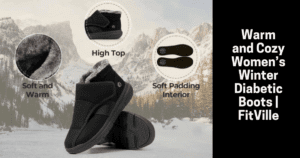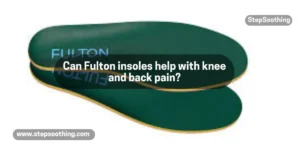Finding the right insole size is essential for foot comfort and support, whether you are an athlete, a hiker, or someone who spends long hours on their feet. Knowing how to measure insole properly ensures an optimum fit, prevents pain, and helps avoid conditions like Plantar Fasciitis, Morton’s Neuroma, and overpronation. Many people experience shoe fit issues due to inaccurate measurements, leading to discomfort and reduced performance. Understanding shoe size differences across various systems such as US, UK, and French is crucial, particularly when shopping from online retailers.
Accurate measurements are necessary to find the best fitting insoles. Whether you choose orthopedic or performance-based insoles, knowing your foot length, width, and heel-to-ball ratio will help in making the right selection. Custom-fitted options provide tailored support, while off-the-shelf choices may require trimming for a true fit.

How to Measure Insole – A Comprehensive Guide for Perfect Fit and Comfort
Importance of Proper Insole Measurement
Insoles are essential for foot support and comfort, whether for sportsmen, hikers, or daily wearers. Choosing the right insole size ensures an optimum fit, reducing pain and preventing foot-related issues like Plantar Fasciitis, Morton’s Neuroma, over-supination, and overpronation. Many people overlook the importance of correct measurements, leading to shoe fit problems, chafing, and irritation. Understanding shoe size across different sizing conventions such as US, UK, and French systems helps in finding the right fit, especially when purchasing from online retailers.
When searching for insoles, it’s vital to consider foot conditions, arch type, and biomechanical needs. Performance-based insoles can enhance athletic performance, especially for those who engage in high-impact activities. Orthopedic inserts provide corrective support for flat feet and high arches. Custom-fitted insoles offer tailored comfort, while off-the-shelf options may require adjustments like trimming excess material for a true fit.
Tools and Techniques for Measuring Insoles
To measure accurately, use measuring tools like a tape measure, ruler, or Brannock Device. Start by placing a clean, flat sheet of paper on the floor against a wall. Stand with your heel touching the wall and ensure your toes are pointed forward. Use a pencil to mark the farthest point of your big toe. Repeat this for both feet, as their length may vary. Next, measure the width by placing the ruler across the ball of your foot, ensuring accuracy. Use the size chart provided by the shoe brand or online retailers to find the correct size.
If you find that your insoles wear out over time, you may need to replace or repair them. Learn more about how to fix worn-out insoles for better longevity.
Step-by-Step Guide to Measuring Your Insole
- Gather Materials – You’ll need a flat surface, clean piece of paper, pencil, ruler, and measuring tape.
- Position Yourself – Place the paper against a wall and stand with your heel touching the edge.
- Trace Your Foot – Use a pencil to carefully mark the tip of your big toe and the widest part of your foot.
- Measure Length and Width – Use a ruler or tape measure to find the distance from the heel to the big toe’s farthest point.
- Check the Insole Size Chart – Compare your measurements with the shoe brand’s provided size chart.
- Consider Half Sizes – If between sizes, round up to the nearest half-size or consider trimming for a better fit.
- Test the Fit – Place the insole inside your shoe and check if it lies flat without gaps or folds.
If your insoles start peeling over time, you might need to fix them. Here’s a useful guide on fixing peeling insoles to help maintain their functionality.
Understanding Insole Sizing and Fit Adjustments
Insole length should align with your shoe fit, meaning it should fit snugly inside without gaps. Half insoles are available for those needing extra support in specific areas. If you’re between sizes, it’s best to round up to the nearest half-size or trim the insole as needed. Some insoles come with removable footbeds, allowing you to adjust the fit. Different brands may have slight variations, so always check their sizing conventions and product descriptions.
For children, proper foot support is crucial as their feet development is ongoing. Their shoe size changes frequently, making measuring a necessary habit to ensure an adequate fit. Parents should allow some room for growth while ensuring the insole provides sufficient support.
Choosing the Right Insole Material
Insoles come in various materials such as foam, gel, leather, and custom orthotic inserts. Foam insoles provide cushioning, while gel insoles enhance shock absorption, making them ideal for sports or long hours of standing. Orthopedic insoles offer corrective support for specific conditions and should be chosen if medically diagnosed with foot ailments. Selecting the best-fitting material ensures comfort and prevents pain while walking or running.
If you’re wondering whether insoles are FSA eligible, check your provider’s guidelines before making a purchase.
Final Considerations for Buying Insoles
When buying shoes or insoles online, carefully check the size chart and product details to avoid misleading purchases. Online shopping provides convenience but can make it difficult to assess true fit, so reviewing customer feedback and checking return policies is advisable. For performance-based needs, select insoles with proper heel-to-ball ratio and support to improve your walking and athletic experience. Whether you prefer shopping at stationary stores or online retailers, taking the time to find the right insole can significantly improve your foot health and overall comfort.
For more information on insoles and to explore our range, visit Insoles for Shoes.
People Also Ask about how to measure Insole
Can I trim my insole if it’s too long?
Yes, many insoles can be trimmed for a better fit. Use scissors to cut along the edges carefully, ensuring you don’t remove too much.
How do I know if my insole provides the right support?
Your insole should feel comfortable, provide adequate cushioning, and support the arches of your feet without any pressure points.
Should I measure my insoles in cm or inches?
Most brands list insole measurements in cm, but some use inches. Always check the brand’s size chart to ensure the correct conversion.
How often should I replace my insoles?
It depends on usage, but typically every 6-12 months for daily wear or sooner if signs of wear and tear appear.
Are all insoles compatible with every shoe?
No, some shoes have narrower designs, and not all insoles fit properly. Always check the shoe fit before purchasing.
Can I use the same insole for different shoes?
Yes, but ensure the insole size and fit match each shoe type for the best support.



